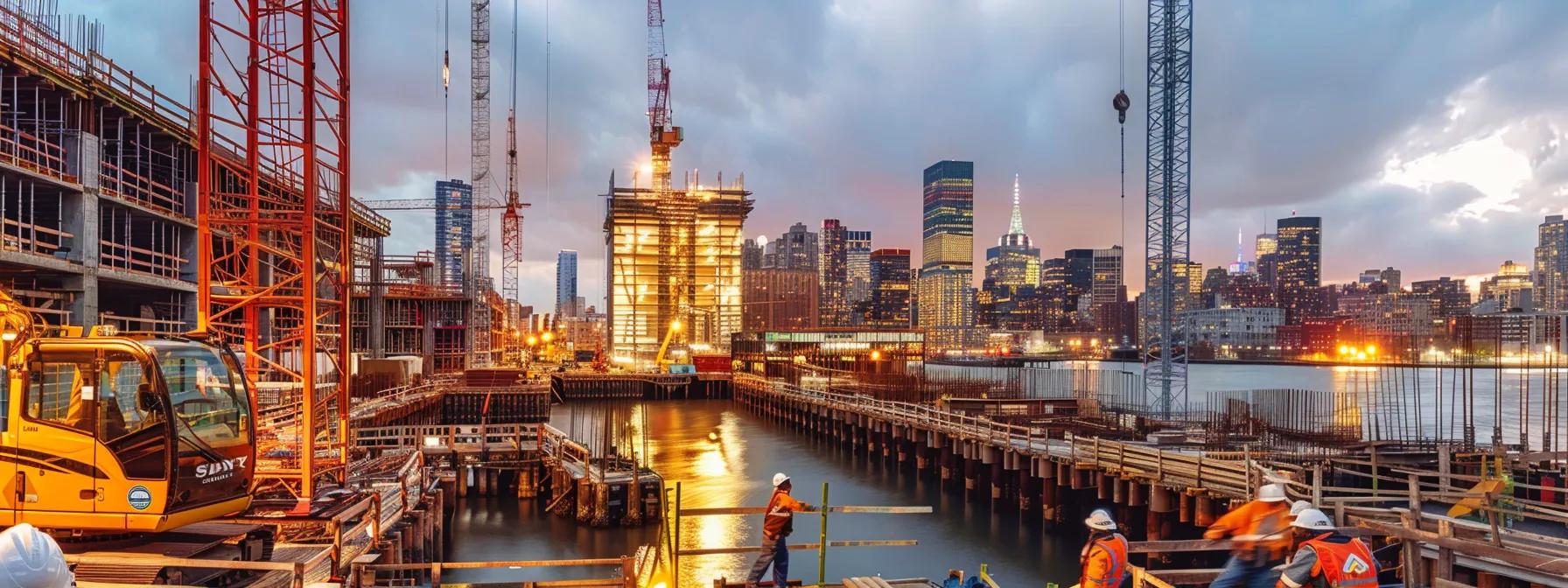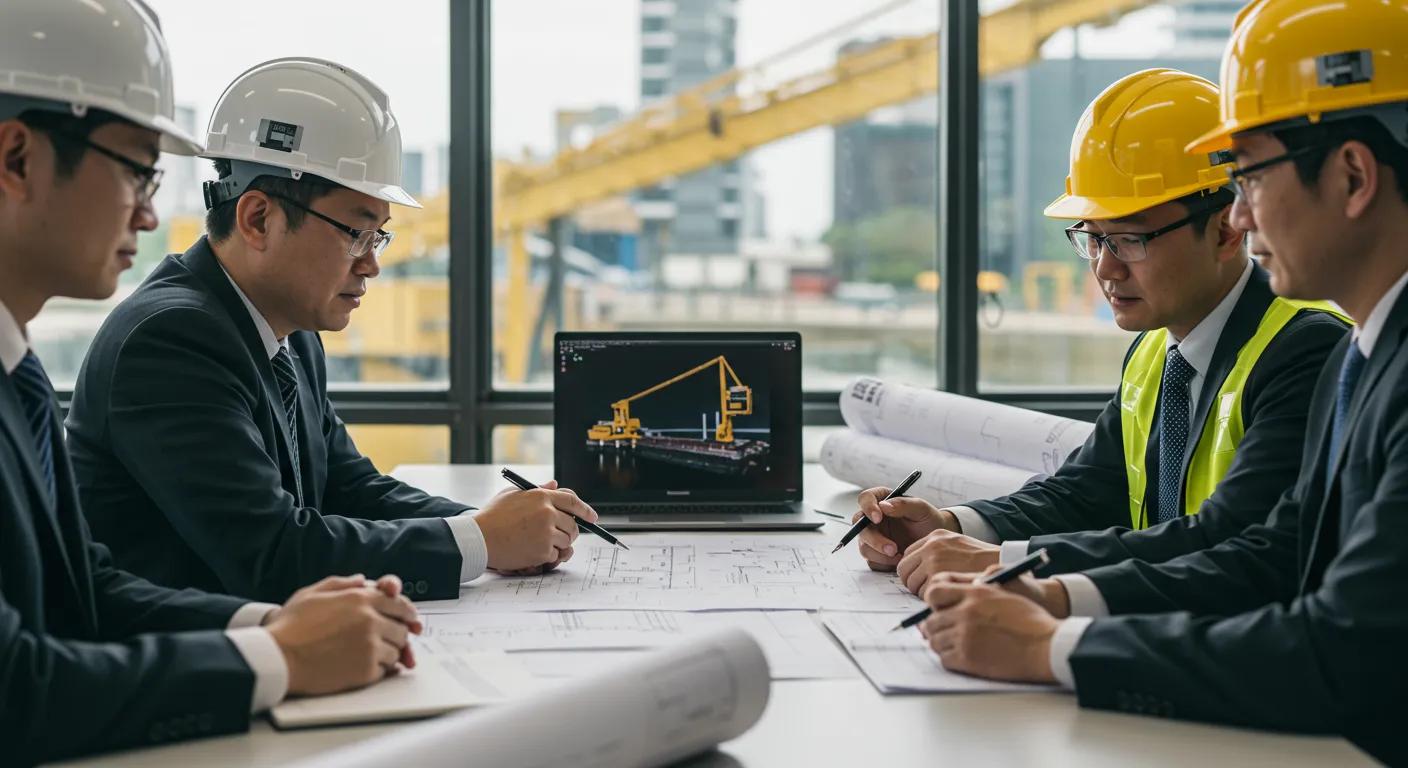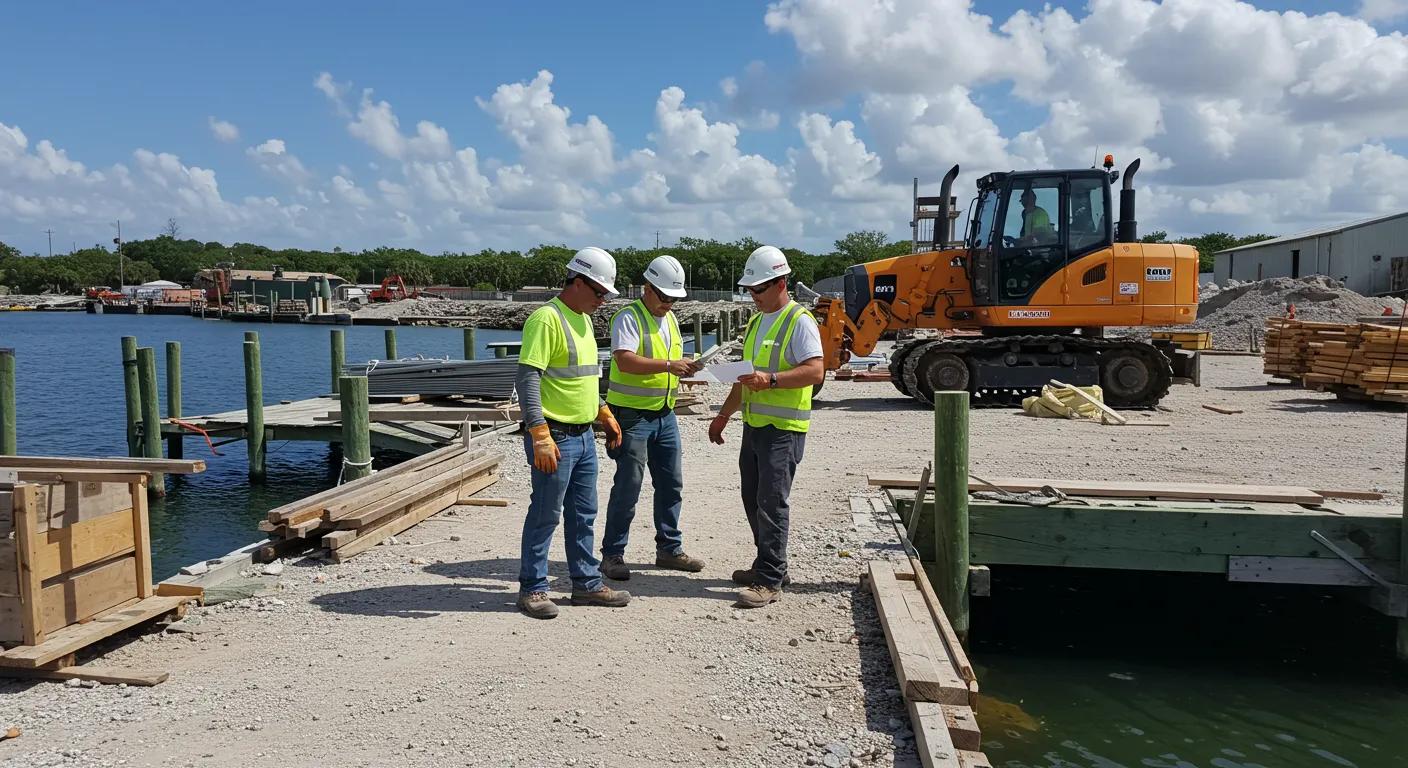Sustainable Dock Construction Techniques for Modern Projects
Welcome to a comprehensive guide on sustainable dock construction techniques for modern projects. In this article, you will explore environmentally conscious methods that ensure safe, cost-effective, and durable dock construction with minimal ecological impact. With concerns over climate change, habitat destruction, and resource depletion, sustainable dock construction protects natural ecosystems while delivering resilient infrastructure. You will learn about core sustainable construction tenets, material selection best practices, innovative design strategies, on‑site construction techniques, and methods to enhance long‑term dock durability. This content is designed for homeowners and waterfront property owners who wish to blend quality craftsmanship with modern sustainability standards. Focus keywords such as erosion control, waste reduction, water quality, and environmental impact are interwoven throughout the discussion to support decision-making for sustainable development. As modern dock building faces challenges like storm surge, sedimentdisturbance, and strict regulatory compliance, you will find actionable insights that integrate community values and ecological stewardship into every project phase. Let’s dive into strategies and techniques that transform traditional dock construction into sustainable innovation.
Defining Environmentally Conscious Dock Building Approaches
Sustainable dock construction begins by defining an environmentally conscious approach that minimizes disruption to nature while ensuring safety and functionality. This involves practices that limit sediment and waste dispersal, reduce the use of toxic treatments, and mitigate disturbances to marine life. Modern dock projects must also address water quality preservation and energy efficiency in line with regulatory compliance.
Understanding the Core Tenets of Sustainable Dock Construction
Key tenets include reducing environmental impact, using renewable or recycled materials, and designing for long-term durability. For instance, erosion control through proper sediment management and storm surge resilience are essential. Every dock component should be planned for material longevity, minimal maintenance, and enhanced safety while resisting wind damage, water pollution, and debris accumulation.
Recognizing the Ecological Advantages of Green Dock Building
Green dock building improves marine habitat preservation, minimizes ecosystemdisturbance, and enhances water quality. Techniques that limit noise, sediment, and chemical use help protect native vegetation and soil integrity. Using renewable energy sources like solar power further reduces carbon emissions and supports sustainable development goals, ensuring ecological balance over time.
Assessing the Long-Term Economic Benefits of Sustainable Methods
Although initial costs may be higher, sustainable methods use durable, recycled, and low-maintenance materials that cut future repair and replacement needs. Resistance to corrosion, biological wear, and marine borers lowers ongoing maintenance expenses while increasing property values and reducing insurance premiums. Modular construction and efficient resource usage further add economic benefits by reducing project disruptions during natural events.
Adhering to Environmental Regulations in Dock Projects
Environmental regulations guide dock construction techniques by setting standards for water quality, species protection, and sediment control. Compliance through detailed environmental impact assessments, inspections, and permits ensures minimal harm to ecosystems while providing safe and compliant structures. Adhering to regulations is both ecologically and economically beneficial.
Integrating Community Values Into Sustainable Dock Design
Incorporating community values is critical. Engaging local stakeholders and considering cultural, recreational, and ecological priorities lead to designs that enhance accessibility, protect marine habitats, and support water conservation. Public consultations and partnerships with environmental organizations help ensure that docks serve both the community and nature, reflecting local values and stewardship.
Material Selection for Resilient and Sustainable Dock Structures
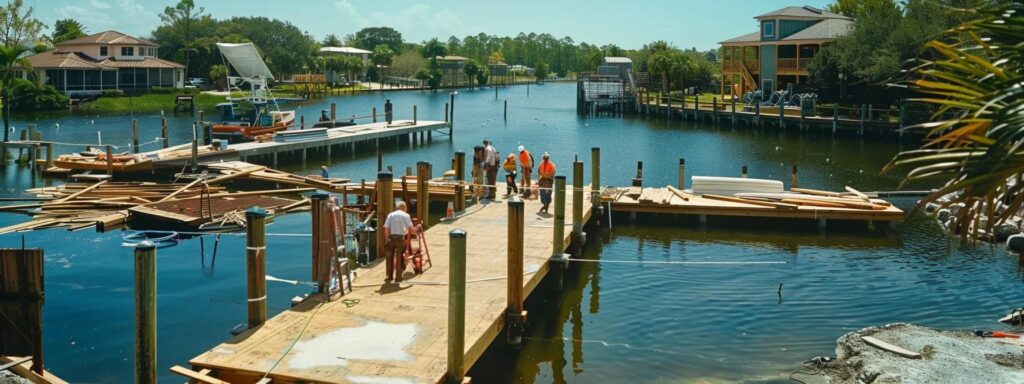
Choosing the right materials is vital for resilience and sustainability. Material selection influences dock durability, maintenance requirements, and overall environmental footprint. In this section, learn about recycled and reclaimed materials, sustainably sourced timber, composite materials for low maintenance, natural stone alternatives, and non‑toxic treatments to build structures that withstand harsh marine environments.
Choosing Recycled and Reclaimed Materials for Dock Frameworks
Recycled metal components and reclaimed wood or composites reduce waste and lower new resource extraction. These materials offer comparable strength and durability while lowering the dock’s carbonfootprint and production costs. Their unique structural traits often enhance aesthetic appeal and sustainability credentials.
Utilizing Sustainably Sourced Timber in Marine Construction
Timber from certified forests, when treated with non‑toxic finishes, resists moisture, decay, and marine borers. Sustainably sourced wood not only extends a dock’s lifespan but also offers a natural look that blends with coastal environments. This reinforces environmental stewardship and supports local industry.
Incorporating Composite Materials for Durability and Low Maintenance
Composite materials, engineered from a blend of recycled plastics and wood fibers, resist rot, corrosion, and constant wear from seawater. Their low maintenance requirements lead to long‑term cost savings and consistent quality, making them ideal for critical marine applications.
Evaluating Natural Stone and Concrete Alternatives for Sustainability
Natural stone and eco‑friendly concrete alternatives, which may incorporate recycled aggregates and low‑carbon cements, offer longevity and strong resistance to erosion and storm surge. These materials reduce the need for frequent maintenance and balance production impact with long‑term structural performance.
Specifying Non-Toxic Treatments and Finishes for Dock Components
Non‑toxic sealants, natural oils, and water‑based treatments replace hazardous chemical coatings that can leach pollutants. These finishes extend the lifespan of wooden and composite materials by preventing mold, corrosion, and deterioration while preserving water quality and marine habitats.
Innovative Design Strategies for Sustainable Dock Construction Techniques
Innovative design strategies are central to sustainable dock construction. This section explores ways to design docks that minimize environmental disturbance, preserve water quality, adapt to climate changes, optimize energy efficiency, and create habitats for marine life—ensuring functionality and long‑term ecological resilience.
Designing for Minimal Environmental Disturbance
A comprehensive environmental impact study identifies sensitive zones such as seabeds, coral reefs, and local vegetation. By positioning piles and footings away from these areas and employing modular construction to reduce on‑site disturbances, designers protect natural habitats while streamlining regulatory approvals. Erosion control measures and sediment barriers further minimize chemical runoff and debris spread.
Incorporating Features for Water Quality Preservation
Design features such as built‑in biofilters, vegetated swales, and permeable deck surfaces facilitate natural runoff filtration and reduce pooling, thereby protecting water quality. Innovations like self‑cleaning systems powered by solar energy contribute to maintaining a high standard of water purity crucial for marine life and regulatory compliance.
Planning for Sea Level Rise and Climate Change Adaptation
Forward‑thinking docks incorporate adjustable supports, elevated structures, and flexible mounting systems to adapt to sea level rise and increased storm intensity. Analyzing historical data and future projections helps engineers design structures that remain resilient amid environmental shifts while integrating renewable energy sources for monitoring and automated adjustments.
Optimizing Dock Orientation for Sunlight and Energy Efficiency
Careful analysis of sun angles and prevailing winds informs deck layout, canopy placement, and solar panel positioning. Maximizing natural lighting in winter while minimizing glare in summer, along with energy‑efficient lighting and passive solar design, reduces energy consumption. Proper orientation also benefits surrounding vegetation by supporting ecological processes like photosynthesis.
Creating Habitats Within Dock Structures for Marine Life
Docks can serve dual functions as infrastructure and marine habitats. Integrating features such as artificial reefs, interstitial spaces, and textured surfaces provides shelter and breeding grounds for native species, promoting biodiversity. Using non‑toxic materials enhances the natural colonization of beneficial organisms, supporting a balanced food chain and adding functional value to waterfront properties.
Implementing Low-Impact Sustainable Dock Construction Techniques on‑Site
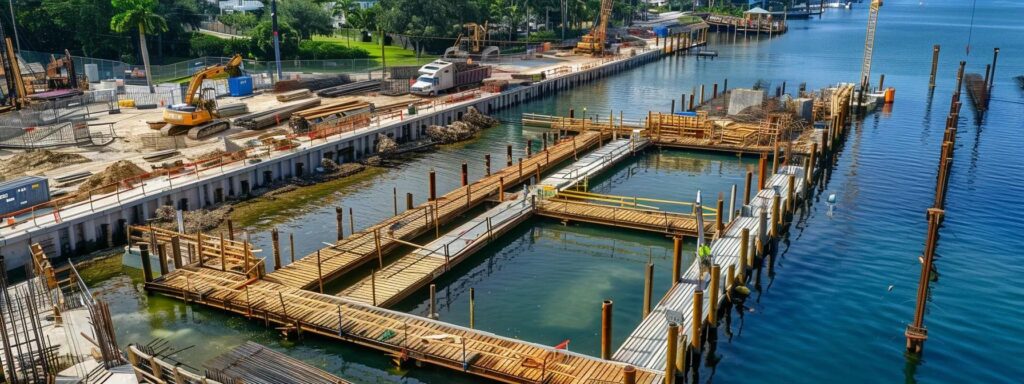
Low‑impact on‑site construction methods are crucial for minimizing environmental harm during dock building. Techniques include careful pile installation, sediment control, waste reduction, noise abatement, and the preservation of existing coastal vegetation.
Minimizing Seabed Disruption During Pile Installation
Precision pile driving methods, such as vibratory hammers or pre‑drilling, reduce vibrations and sediment displacement. Real‑time seabed monitoring ensures disturbances stay within acceptable limits, protecting native species and soil integrity. Using low‑noise, eco‑friendly equipment further minimizes environmental stress.
Controlling Sediment and Runoff Throughout the Building Process
Temporary sediment barriers like silt fences and sedimentation ponds, coupled with careful water flow management and work schedule planning based on tidal cycles, reduce the dispersal of contaminants. These measures keep construction debris from polluting nearby waters and protect aquatic life.
Reducing Construction Waste and Promoting Material Recycling
Strategic planning for material usage and on‑site recycling minimizes landfill waste. Reusing wood offcuts, metal scraps, and other recyclables in support structures not only lowers disposal fees but also sets a standard for responsible construction practices.
Employing Quiet Technologies to Lessen Noise Pollution
Electric‑powered pile drivers and automated machinery with noise reduction features decrease low‑frequency disturbances during construction. Such quiet technologies help comply with local noise regulations and reduce environmental disruption for nearby marine and residential areas.
Protecting Existing Vegetation and Coastal Habitats
Mapping ecologically sensitive zones and establishing temporary fencing and designated work paths protect native flora and nesting areas from accidental damage. Crew training in environmental stewardship ensures that vulnerable coastal habitats remain undisturbed throughout the construction process.
Enhancing Durability and Reducing Maintenance With Sustainable Dock Construction
Long‑term dock durability depends on material quality, thoughtful design, and protective measures. This section outlines strategies for creating structures that withstand extreme weather, resist corrosion and biological degradation, and are designed for ease of inspection and repair.
Building Dock Systems to Withstand Extreme Weather Events
Docks engineered with reinforced supports, flexible coupling mechanisms, and adjustable pier elements efficiently absorb shocks from high winds, storms, and heavy rains. Careful simulation of weather conditions and the use of advanced materials that withstand high hydrostatic pressures ensure enduring performance even under adverse conditions.
Selecting Materials Resistant to Corrosion and Marine Borers
High‑quality stainless steel, composite laminates, and sustainably sourced timber treated with non‑toxic preservatives resist saltwater corrosion and decay caused by marine borers. These materials reduce repair frequency and cost, and studies indicate that corrosion‑resistant docks can reduce maintenance expenses by up to 40% over several decades.
Designing for Easy Inspection and Repair of Dock Components
Modular design and standardized components facilitate quicker inspections and repairs, minimizing downtime and labor costs. Features like quick‑release fasteners and accessible inspection points help maintain functionality and allow for easy updates as new technologies emerge.
Implementing Protective Measures Against Physical Damage
Protective elements such as shock‑absorbing fenders, energy‑dissipating bumpers, and strategically placed guard rails help absorb impacts and prevent damage from boats and debris. These measures extend the dock’s life by reducing repair needs and enhancing overall structural reliability.
Projecting the Lifespan of Sustainably Constructed Docks
Using advanced modeling and historical performance data, sustainable docks are designed to last 50 years or more with proper maintenance. Long‑term durability minimizes the need for frequent rebuilds and aligns perfectly with sustainable development goals by reducing resourceconsumption and waste.
Future Outlook and Advancements in Sustainable Dock Construction Techniques

Sustainable dock construction is continually evolving. Future advancements will focus on emerging materials, smart monitoring systems, and innovative design concepts that further improve both environmental performance and economic benefits.
Examining Emerging Materials for Eco‑Friendly Docks
New materials such as advanced composite polymers, bamboo‑based bio‑composites, and ultra‑high‑performance concrete offer increased strength, durability, and resistance to marine degradation with a lower environmental footprint during production. As research continues, these materials are expected to become commonplace by further reducing greenhouse gas emissions and resource extraction.
Investigating Smart Technologies for Dock Monitoring and Management
Embedded sensors, real‑time data analytics, and automated alert systems are beginning to revolutionize dock management. These smart technologies help track corrosion, damage, and stress levels, enabling proactive maintenance while optimizing energy consumption with integrated renewable energy sources.
Reviewing Successful Modern Projects With Sustainable Docks
Projects in Europe and North America have demonstrated the effectiveness of sustainable dock construction using recycled materials, eco‑friendly finishes, and smart monitoring systems. These case studies show significant reductions in maintenance costs and improved durability while preserving local marine habitats, serving as benchmarks for future projects.
Anticipating Regulatory Changes Affecting Dock Construction
As environmental data evolves, regulations are expected to become stricter regarding sediment discharge, energy efficiency, and ecological impact assessments. Proactive design and construction techniques will help projects adapt to these regulatory shifts, reducing legal and financial risks over time.
Promoting Wider Adoption of Sustainable Dock Building Practices
Educational campaigns, technical workshops, and public‑private partnerships are essential to communicate the long‑term benefits of sustainable dock construction. Highlighting success stories and tangible economic advantages can encourage more stakeholders to transition away from traditional, environmentally harmful methods, making green dock construction accessible to a broader market.
Table: Comparison of Sustainable Dock Materials and Their Attributes
Before moving to the conclusion, consider the following table summarizing key materials used in sustainable dock construction, their primary attributes, and benefits:
| Material Type | Primary Attribute | Key Benefit | Environmental Impact |
|---|---|---|---|
| Recycled/Reclaimed Wood | Renewable, Recycled | Low carbon footprint, aesthetic appeal | Minimal waste, eco-friendly |
| Sustainably Sourced Timber | Certified, Responsibly harvested | Natural look, high durability | Supports forest conservation |
| Composite Materials | Engineered for durability | Low maintenance, high resistance | Reduced resource extraction |
| Eco‑friendly Concrete | Incorporates recycled aggregates | Long lifespan, resilient under stress | Lower greenhouse gas emissions |
| Natural Stone | High density, weather resistant | Superior strength, low upkeep | Sustainable if locally sourced |
This table illustrates how innovative material choices contribute to overall sustainability while providing long‑term economic and environmental benefits.
Final Thoughts
In summary, sustainable dock construction techniques combine innovative design, eco‑friendly materials, and low‑impact on‑site practices to create structures that withstand extreme weather, reduce maintenance costs, and protect local ecosystems. With forward‑looking designs, smart technologies, and responsible material choices, modern docks achieve a balance between functionality and environmental stewardship. Embracing these strategies today lays a solid foundation for future waterfront projects that benefit both property owners and the natural environment.
Frequently Asked Questions
Q: What are the core principles of sustainable dock construction? A: The core principles focus on minimizing environmental impact using renewable or recycled materials, ensuring long‑term durability, and incorporating design features that reduce maintenance and energy consumption. These strategies protect marine ecosystems while creating cost‑effective and resilient dock structures.
Q: How does sustainable dock building benefit the local ecosystem? A: It minimizes seabed disruption, preserves water quality, and creates microhabitats for marine life. Non‑toxic finishings and eco‑friendly materials help maintain native vegetation and reduce pollution, supporting overall biodiversity.
Q: Which materials are recommended for sustainable dock construction? A: Recommended materials include recycled and reclaimed wood, sustainably sourced timber, advanced composite materials, eco‑friendly concrete, and natural stone. These options offer durability with low maintenance and reduced environmental impact.
Q: How can smart technologies improve dock maintenance? A: Embedded sensors, automated monitoring systems, and data analytics provide real‑time tracking of environmental and structural conditions. This proactive approach reduces repair costs, extends the dock’s lifespan, and enhances safety during extreme weather events.
Q: What design strategies help docks adapt to climate change? A: Strategies include planning for sea level rise with adjustable supports, optimizing dock orientation for energy efficiency, and incorporating renewable energy systems. These measures make docks more resilient and sustainable over time.
Q: How does material selection impact the durabilityof a dock? A: Material choices directly affect a dock’s ability to resist corrosion, biological degradation, and physical impacts. Using composite polymers, sustainably sourced timber, and eco‑friendly concrete leads to lower maintenance costs and longer structural lifespans.
Q: Are there economic advantages associated with sustainable dock building? A: Yes. Sustainable dock building reduces long‑term maintenance and repair expenses while increasing property value. Investment in eco‑friendly materials and design strategies yields a higher return over the dock’s lifespan and lowers the overall environmental footprint.

